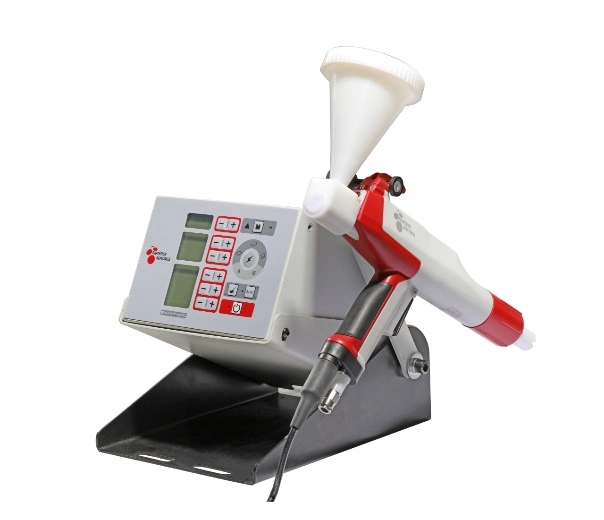Content Menu
● Introduction
● The Critical Role of Data in Coating Productivity
>> What Is a Data Management System in the Coating Industry?
>> Why Is Productivity So Dependent on Data?
● Signs That Your Data Management System Is a Bottleneck
>> Inefficient Data Entry and Retrieval
>>> Key Symptoms
>> Lack of Integration Between Departments
>>> Typical Frustrations
>> Slow, Error-Prone Reporting and Compliance
>> Limited Visibility and Analytics
>>> Consequences
● The Cost of an Outdated Data Management System
>> Wasted Labor Hours
>> Lost Innovation
>> Increased Risk
>> Competitive Disadvantage
● What Does a High-Productivity Data Management System Look Like?
>> Centralized, Digital, and Secure
>> Real-Time Collaboration and Access
>> Seamless Integration Across Functions
>> Automation of Repetitive Tasks
>> Powerful Analytics and Reporting
● Key Features of an Effective Coating Data Management System
>> Customizable Formulation Management
>> Robust Traceability and Audit Trails
>> Integrated Compliance Management
>> Laboratory Information Management (LIMS)
>> Scalable and User-Friendly Interface
● Steps to Uplevel Your Data Management System
>> 1. Audit Your Current System
>> 2. Engage Stakeholders Across Departments
>> 3. Define Integration and Scalability Needs
>> 4. Prioritize Data Security and Compliance
>> 5. Provide Thorough Training and Change Management
>> 6. Use Data to Drive Continuous Improvement
● Real-World Example: Transforming a Coatings Manufacturer's Workflow
● Frequently Asked Questions (FAQ)
>> Q1: How do I know if my current data management system is truly hurting productivity?
>> Q2: What are the risks of delaying an upgrade to our data management system?
>> Q3: Will upgrading disrupt our current operations?
>> Q4: How do we ensure our new system remains secure and compliant?
>> Q5: What is the typical return on investment for a modern data management system?
Introduction
In the rapidly evolving world of coatings manufacturing and application, productivity is king. Companies are constantly striving to produce higher-quality coatings more efficiently, with fewer errors and at lower costs. Yet, amidst all the focus on raw materials, equipment upgrades, and process optimization, many organizations neglect one of the most critical components impacting their success: their data management system (DMS).
A poor or outdated data management system can create wide-reaching bottlenecks in the coating workflow. These inefficiencies translate into wasted time, increased errors, higher operational costs, and lost business opportunities. Conversely, a robust, modern DMS can revolutionize how your operations run by enabling better decisions, reducing rework, and streamlining every part of the process.
In this article, we'll explore how your data management system may be holding your coating productivity back, what an ideal system looks like, and practical steps to modernize your workflows. We'll also address common questions professionals face in upgrading their systems.

The Critical Role of Data in Coating Productivity
What Is a Data Management System in the Coating Industry?
At its core, a data management system is the backbone for capturing, storing, accessing, and analyzing information throughout your coatings value chain. This includes formulation data, raw material properties, quality control results, process parameters, production records, compliance documents, and customer specifications.
In the coatings industry, the DMS bridges communication between research and development, procurement, QA/QC, regulatory affairs, production, and customer support. The effectiveness and flexibility of your DMS can directly influence your company's ability to innovate, scale, adapt, and consistently deliver top-quality coatings.
Why Is Productivity So Dependent on Data?
Productivity in coating operations means maximizing throughput, consistency, and quality while minimizing errors, waste, and downtime. Data is the lifeblood that makes this possible. Here are key reasons data drives productivity:
- Formulation Optimization: Historical data on performance, recipes, and test results enables R&D to refine coatings faster and with less trial and error.
- Quality Assurance: Immediate access to quality and test data reduces the risk of manufacturing defects passing downstream.
- Regulatory Compliance: Centralized data supports rapid generation of safety data sheets (SDS), labels, and compliance audits.
- Supply Chain Coordination: Integrated systems prevent bottlenecks by quickly identifying shortages or inconsistencies in raw materials.
- Customer Response: Fast retrieval of technical and batch information supports rapid troubleshooting and customer satisfaction.
Signs That Your Data Management System Is a Bottleneck
Inefficient Data Entry and Retrieval
One of the biggest signs your current system is holding back productivity is the amount of manual data entry, redundant paperwork, or time wasted searching for records. If your staff spends significant time transcribing information or combing through spreadsheets and paper files, productivity is already being compromised.
Key Symptoms
- Duplicate data entry into multiple systems
- Critical data siloed in email threads or departmental folders
- Difficulty finding past batch records or formulation versions
- Frequent errors due to manual entry or version confusion
Lack of Integration Between Departments
Does your R&D team use their own database, while production relies on printed formulations? Do quality control and regulatory affairs use completely different documentation tools? Disconnected systems create delays, miscommunication, and opportunities for error.
Typical Frustrations
- Specifications not reflected in production due to miscommunication
- QA unable to check test history quickly during troubleshooting
- Regulatory teams chasing down records for compliance reporting
Slow, Error-Prone Reporting and Compliance
If regulatory reporting is a stressful, manual process taking days or weeks, your DMS is a clear roadblock. In the worst cases, incomplete or inaccurate documentation can expose your company to legal and financial risk.
Limited Visibility and Analytics
Data scattered across unconnected spreadsheets and paper forms makes real-time analytics impossible. Leadership cannot identify trends or problems until serious issues arise.
Consequences
- Inability to easily compare batch performance, reject rates, or yield loss over time
- Missed opportunities for process optimization
- Slow response to customer or regulatory queries
The Cost of an Outdated Data Management System
Wasted Labor Hours
Manual data handling consumes countless hours every month. Technicians and chemists spend time on low-value tasks rather than improving products or processes.
Lost Innovation
When historical data and learnings are hard to access, R&D is forced to repeat past mistakes or rely on gut instinct rather than data-driven decisions.
Increased Risk
Inaccuracy in record-keeping can lead to:
- Non-compliance with environmental, health, and safety standards
- Customer claims due to lack of traceability
- Production shutdowns from untraceable process variables
Competitive Disadvantage
As competitors adopt smarter systems, companies lagging behind find it harder to keep up with customer expectations for quality, speed, and customization.
What Does a High-Productivity Data Management System Look Like?
Centralized, Digital, and Secure
A modern coating DMS captures all relevant data—from lab to production—in a single, centralized platform. This cloud- or server-based solution provides secure access based on user roles, drastically reducing the number of siloed systems.
Real-Time Collaboration and Access
Team members can access up-to-date data anytime, anywhere, fostering collaboration and rapid problem solving. Approvals, comments, or troubleshooting can be handled instantly, eliminating bottlenecks.
Seamless Integration Across Functions
An effective DMS connects formulation, batch manufacturing, QC, inventory, regulatory, and customer records. Data flows automatically, reducing manual intervention and ensuring all stakeholders have the latest information.
Automation of Repetitive Tasks
Modern systems automate critical functions such as:
- Data capture from lab equipment or production lines
- Generation of regulatory documents and labels
- Batch record creation and archiving
- Notification alerts for out-of-spec results or inventory constraints
Powerful Analytics and Reporting
Dashboards and analytics tools empower users to visualize trends, spot outliers, and make informed decisions quickly.
Key Features of an Effective Coating Data Management System
Customizable Formulation Management
Your DMS should allow:
- Easy versioning and modification of recipes
- Recording of all critical parameters and results
- Linking of formulations to batches and test data
Robust Traceability and Audit Trails
Every change, approval, and batch record should be automatically logged for accountability and regulatory compliance.
Integrated Compliance Management
Generate regulatory documents, safety data sheets, and reports directly from the system. Instantly access historical records during inspections.
Laboratory Information Management (LIMS)
For R&D and QC labs, LIMS modules organize tests, automate workflows, and enable instant access to results, enhancing speed and data integrity.
Scalable and User-Friendly Interface
A modern system should grow with your business and offer intuitive interfaces to minimize user training and error.
Steps to Uplevel Your Data Management System
1. Audit Your Current System
Map out your existing data sources, workflows, software, and pain points. Identify which data is most often lost, duplicated, or delayed.
2. Engage Stakeholders Across Departments
Involve representatives from R&D, QA/QC, production, regulatory, and IT in selecting or designing a new system. Gather their “must-haves” and “nice-to-haves”.
3. Define Integration and Scalability Needs
Choose a DMS that can connect with ERP, MES, LIMS, or other systems you use now—or plan to use in the future. Ensure that it can scale as your business grows or processes evolve.
4. Prioritize Data Security and Compliance
Opt for platforms with robust data security, user access controls, regular backups, and compliance tools for relevant industry standards.
5. Provide Thorough Training and Change Management
No system revolutionizes productivity overnight. Invest in user training, phase transitions to minimize disruption, and provide ongoing support.
6. Use Data to Drive Continuous Improvement
With your new DMS in place, analyze process and quality data regularly. Set KPIs and use the insights gained to reduce waste, optimize costs, and accelerate innovation.
Real-World Example: Transforming a Coatings Manufacturer's Workflow
Imagine a mid-sized coatings manufacturer struggling with inconsistent quality and slow time-to-market for new products. Their data was scattered across aging spreadsheets, paper forms, and disconnected databases, resulting in frequent batch errors and frustrating regulatory audits.
After evaluating their needs, the manufacturer adopted a centralized, cloud-based data management platform that integrated their formulation, QC, batching, and regulatory workflows. Within the first year, the company reported:
- 30% faster new product development cycles
- 25% reduction in quality-related rejects
- Substantially reduced regulatory audit times
- Improved workforce morale, as chemists and technicians focused on value-adding tasks

Frequently Asked Questions (FAQ)
Q1: How do I know if my current data management system is truly hurting productivity?
A1: Signs include excessive manual data entry, frequent searching for or reconstructing records, disconnected systems between departments, slow regulatory or quality reporting, and difficulty identifying production trends or recurring problems.
Q2: What are the risks of delaying an upgrade to our data management system?
A2: Waiting may increase costs due to inefficiency, the risk of regulatory penalties, losing experienced staff due to frustration, and falling behind competitors who already leverage smarter, integrated systems.
Q3: Will upgrading disrupt our current operations?
A3: While any transition requires planning, a properly managed rollout—with phased implementation and thorough training—can minimize disruptions and quickly deliver improvements.
Q4: How do we ensure our new system remains secure and compliant?
A4: Choose solutions with strong data encryption, user access controls, routine backup protocols, and compliance tools updated to current standards. Regularly review security procedures with your IT team.
Q5: What is the typical return on investment for a modern data management system?
A5: ROI varies, but manufacturers typically report significant cost savings from reduced labor, lower error rates, faster innovations, improved compliance, and stronger customer satisfaction. Many realize benefits within the first year.
Hot Tags: China, Global, OEM, private label, manufacturers, factory, suppliers, manufacturing company










































 .
. 